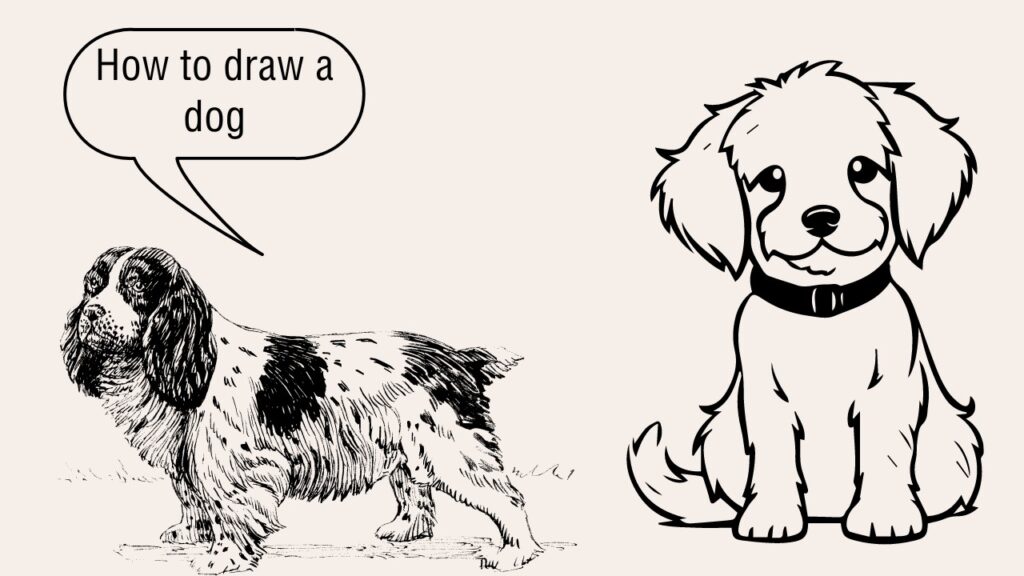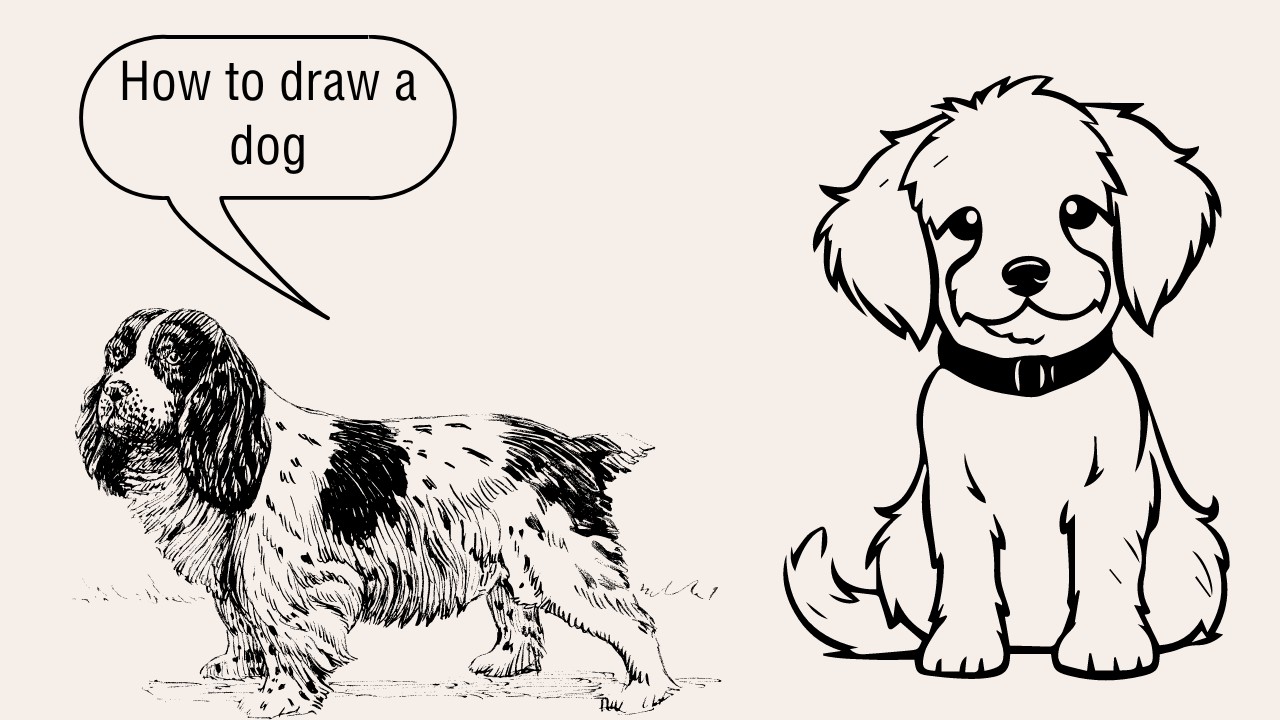
How to Draw a Dog, Drawing a dog can be a fun and rewarding experience. Whether you’re a beginner or someone looking to refine your skills, this guide will walk you through each step in a simple and clear manner.
We’ll cover everything from basic shapes to adding details, making it easy for anyone to follow along. Let’s get started!
Materials Neededfor How to Draw a Dog
Before you start drawing, gather your materials. You’ll need:
- Pencils (preferably HB or 2B)
- Eraser
- Drawing paper
- Pen or marker (for final outlines)
- Colored pencils or markers (optional)
Table 1: Benefits of Using Different Drawing Tools
| Tool | Benefits |
|---|---|
| Pencils | Allows for easy adjustments and shading. |
| Erasers | Useful for correcting mistakes. |
| Colored Pencils | Adds color and vibrancy to your drawing. |
| Markers | Creates clear and bold outlines. |
How to Draw a Dog ,Start with Basic Shapes
Begin by sketching basic shapes to form the foundation of your dog drawing. Start with a large oval for the body, a smaller circle for the head, and then add basic shapes for the legs and tail. These shapes help outline the proportions and position of your dog.
When drawing the oval for the body, make sure it is slightly tilted to give your dog a natural posture. Place the smaller circle slightly above the oval to position the head correctly. Add straight lines for the legs and a curved line for the tail.
Outline the Dog’s Body
Once the basic shapes are in place, start outlining the dog’s body. Begin by connecting the shapes with smooth, curved lines. Focus on the body’s overall shape and make adjustments as needed. This step is crucial for creating a realistic structure for your dog.
Pay attention to the curves of the body, especially around the belly and legs. For the head, draw a gentle curve to form the snout and outline the ears. Remember, this is just an outline, so don’t worry about making it perfect at this stage.
Add Details to the Face
The face is one of the most important parts of the dog, so add details like the eyes, nose, and mouth. Draw two almond-shaped eyes, a small oval for the nose, and a curved line for the mouth. The eyes should be placed evenly on either side of the face, and the nose should be centered at the end of the snout.
For a realistic look, add details such as pupils in the eyes and a small line under the nose for the mouth. Don’t forget to sketch the eyebrows and any other facial features like whiskers or a tongue if you want your dog to have a specific expression.
Draw the Ears and Tail
Next, add the ears and tail. Depending on the breed you are drawing, ears can be different shapes—pointed, floppy, or even semi-erect. Draw the ears by extending lines from the head shape and adjusting their position to match your chosen breed.
For the tail, start from the back of the body and draw a curved line that follows the natural flow. The tail can be straight or curved, depending on the breed. Make sure it complements the body shape and position.
Sketch the Legs and Paws
Now, focus on the legs and paws. Draw the legs by extending lines from the body and adding small ovals or circles at the end for the paws. For a more detailed look, add individual toes and claws.
Ensure that the legs are proportionate and properly aligned with the body. Each paw should have defined toes, which can be done by drawing small curved lines at the base of each paw.
Add Fur and Texture
To give your drawing a realistic appearance, add fur and texture. Use short, light strokes to create the look of fur, varying the length and direction of the strokes based on the breed. For example, a short-haired breed will have shorter, smoother strokes, while a long-haired breed will require longer, flowing strokes.
Adding texture helps bring your drawing to life and makes it look more like a real dog. Pay attention to the areas around the neck, belly, and legs where the fur may naturally bunch up.
Finalize Your Drawing
Once you’re happy with the sketch, finalize your drawing by going over the lines with a pen or marker. Carefully outline the shapes and details you’ve drawn, and then erase any unnecessary pencil marks.
After outlining, you can add color to your drawing if you wish. Use colored pencils or markers to fill in the fur, eyes, nose, and other features. Choose colors that match the breed or get creative with your own color combinations.
Review and Make Adjustments
Finally, review your drawing and make any adjustments. Look for areas that may need more detail or correction. This is your chance to refine the drawing and make sure everything looks just right.
Remember to take your time and make any necessary changes. Your drawing will improve with each adjustment, so don’t rush this final step.
Conclusion
Drawing a dog involves a series of simple steps, starting from basic shapes and moving towards detailed features. By following this guide, you’ll be able to create a dog drawing that is both accurate and expressive. Practice regularly to improve your skills and experiment with different breeds and styles.
Drawing a dog can be a fun and fulfilling activity. With the right techniques and a little practice, you’ll be able to bring your furry friend to life on paper. Enjoy the process and happy drawing!


